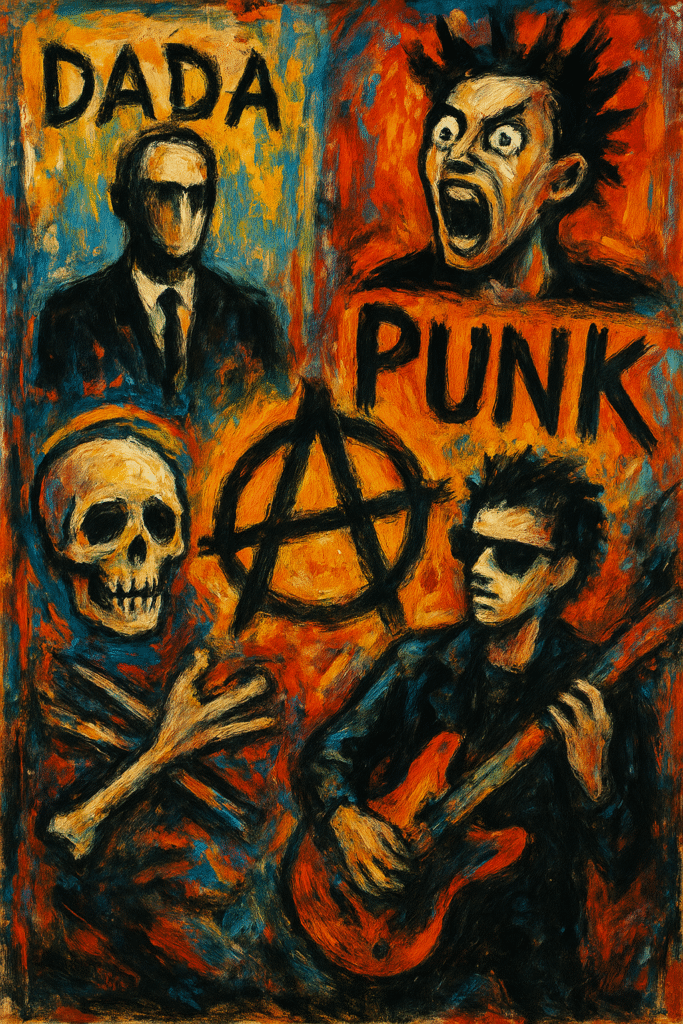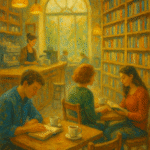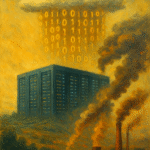Art has always served as a conduit for self-expression and a mirror reflecting societal upheaval. In this landscape, modern art movements born from rebellion have emerged, shaking conventional tenets and challenging the status quo. This article dives deep into key movements, including Dadaism and Punk, offering insights into how these revolutionary art forms ignited change.
The Genesis of Rebellion in Art
Understanding Modern Art Movements
What constitutes a modern art movement born from rebellion? Generally, these movements challenge established norms, rejecting traditional methods and ideologies. When it comes to avant-garde art styles, two standout movements are the Dada art movement and the Punk art movement, both marked by a fierce opposition to their contemporary societal constraints. Each has left an indelible mark on culture, influencing countless artists and movements that followed.
Dada: The Anti-Art Movement
Dadaism emerged during World War I, a chaotic time that led artists to question the values of society. The Dada art movement history is rich in contradiction, with creators advocating for random expression and the absurd. This rebellious stance positioned Dada as a pivotal player in reshaping perspectives about what art could be.
Key Characteristics of Dada
* Anti-art Philosophy: Rejects traditional aesthetic standards.
* Randomness and Chance: Embraces spontaneity and unpredictability in the creative process.
* Collage and Assemblage: Utilizes mixed media and everyday objects to form art.
The Influence of Dadaism on Contemporary Art
Research shows that Dada laid the groundwork for future artistic movements focused on rebellion. Concepts introduced by Dadaists paved the way for Surrealism and conceptual art, which challenged further the boundaries of creativity.
Punk: A Raw Expression of Rebellion
The Punk art movement influence extends far beyond music; it symbolizes a cultural revolution. Emerging in the 1970s, Punk art reflects youthful dissatisfaction with authority and societal norms.
Understanding Punk Art
Just like Dada, Punk embodies a spirit of defiance. Its roots in anti-establishment philosophy are evident through its distinctive graphics and activist motifs. Punk art often features vibrant colors, bold typography, and an accessible style that rejects elitism.
Key Characteristics of Punk Art
* DIY Ethic: Encourages self-production and distribution, making art accessible to everyone.
* Subversive Imagery: Challenging political and social issues through visual art and performance.
* Community-Driven: Often connected to underground scenes and local movements.
The Lasting Impact of Punk on Art
According to a study from Government Research Database, Punk’s legacy continues to empower new generations of creators, pushing them to vocalize dissent through their art. The movement has also influenced various other genres, including street art, graphic design, and even commercial advertising.
Dada and Punk: A Comparison of Rebellion
While both Dadaism and Punk serve as profound expressions of rebellion, they differ significantly in their context and execution. Understanding the similarities and distinctions provides insight into how rebellion manifests in modern art through various lenses.
Similarities Between Dada and Punk
* Anti-establishment Sentiment: Both counteract societal norms and conventions.
* Innovative Techniques: Use of unconventional methods in art-making.
* Cultural Commentary: Each critiques the prevailing socio-political landscape.
Differences Between Dada and Punk
* Historical Timing: Dada arose from the chaos of WWI, while Punk is rooted in post-war societal unrest.
* Medium: Dada often employed abstraction and collage, while Punk commonly utilizes graphic imagery and typographical design.
The Power of Rebellion in Art
Modern art movements born from rebellion provide a voice for the voiceless and challenge the mainstream narrative. They reflect societal tensions and provoke thought, encouraging audiences to question and rethink their perspectives. Movements like Dada and Punk remind us that art is not just an aesthetic pursuit but a powerful means of instigating change.
To delve deeper into modern art movements and their revolutionary impact, stay updated with continual research and analysis in the field. Whether you’re an artist, a student, or simply an enthusiast, explore how these movements continue to shape our understanding of art today.
Ready to explore the revolutionary spirit of art further? Check out our resources and insights on modern art movements filled with rich history and engaging analysis.
References:
* Government Research Database
* Academic Research Portal
* Statista reports on contemporary art impact and movements
* Peer-reviewed journals discussing Dadaism and Punk in art history


